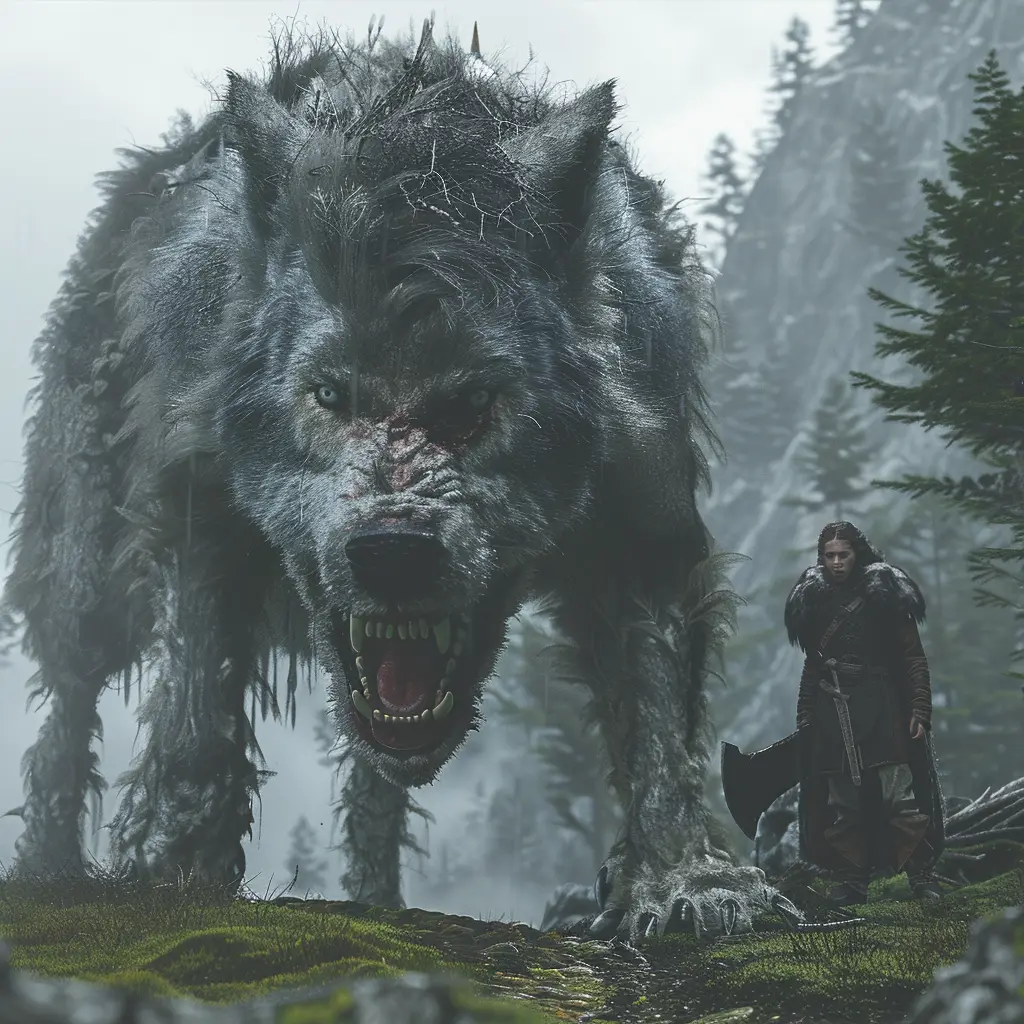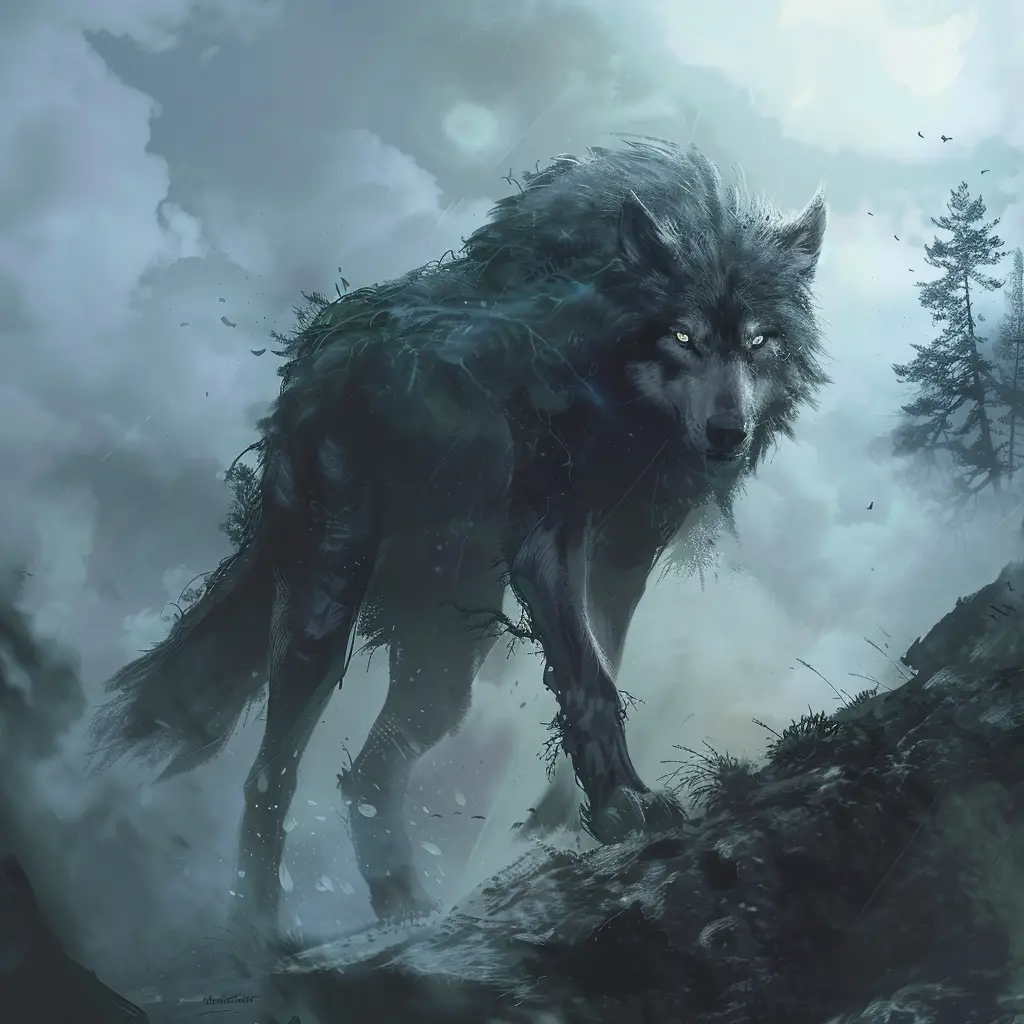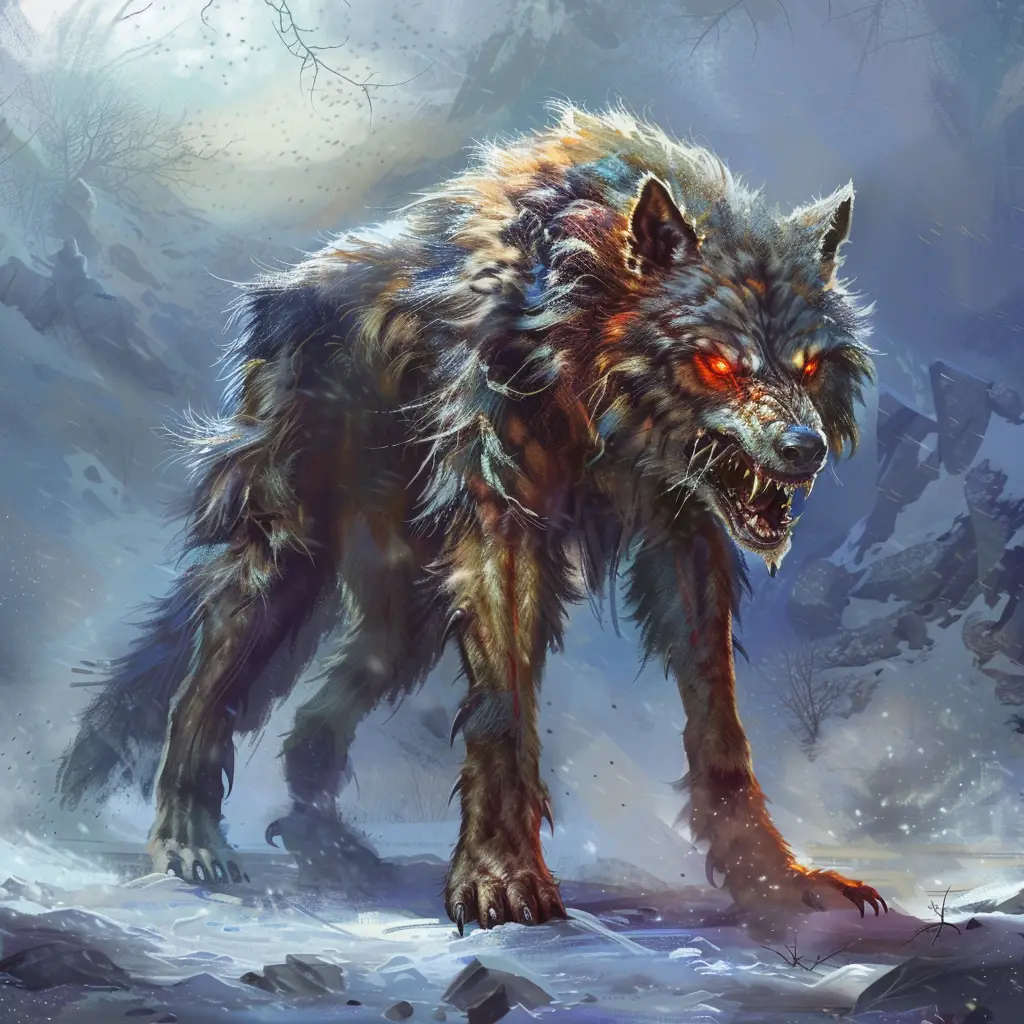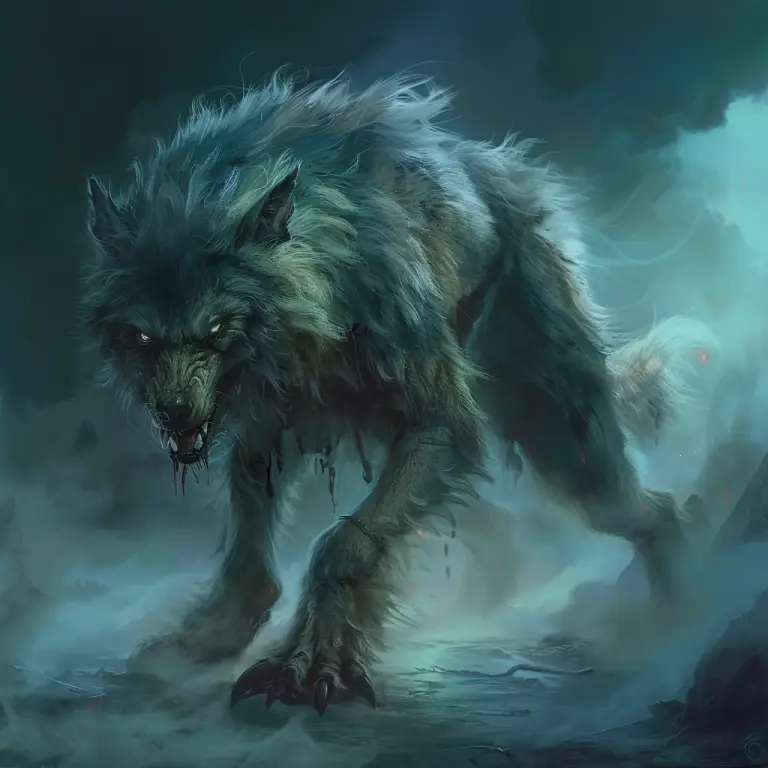Wargs, also spelled as “vargs” or “vargr,” are prominent in Viking mythology and literature. These mythological creatures are often depicted as large, powerful wolves, and they carry significant symbolic and narrative weight in Norse culture. Here’s an overview of wargs in Viking mythology, their characteristics, symbolism, and their appearances in myths and sagas.
Origins and Definition
Etymology:
The Old Norse term “vargr” or “varg” can mean both “wolf” and “outlaw.” This dual meaning underscores the warg’s association with danger and social marginalization.
In Proto-Germanic, the word is “wargaz,” which refers to a wolf or a strangler, highlighting the warg’s connotations with ferocity and criminality.
Description:
Wargs are typically depicted as huge, menacing wolves, often with supernatural abilities or connections to the gods and the underworld.
They are larger and more fearsome than ordinary wolves, embodying chaos and the untamed aspects of nature.
Mythological Significance
Association with Chaos:
Wargs are often symbols of destruction and chaos. They embody the wild, uncontrollable forces that threaten the order maintained by the gods and humanity.
Their presence in myths often signals doom or upheaval, as they are frequently associated with death and the apocalypse.
Connection to Outlaws:
The term “vargr” also denotes an outlaw or someone who is cast out of society. This reflects the idea that wargs are not just literal creatures but also symbolize those who live outside societal norms and bring disorder.
Notable Wargs in Norse Mythology
Role: Fenrir is perhaps the most famous warg in Norse mythology. He is a gigantic wolf, the offspring of Loki and the giantess Angrboða.
Symbolism: Fenrir is a symbol of ultimate chaos and destruction. Bound by the gods due to a prophecy that he would bring about the death of Odin during Ragnarök, Fenrir’s eventual escape is a key event leading to the apocalypse.
Myth: Fenrir is prophesied to devour Odin during the final battle of Ragnarök before being slain by Odin’s son, Víðarr.
Geri and Freki:
Role: Geri and Freki are the two wolves that accompany Odin, the Allfather, in Norse mythology.
Symbolism: While not as fearsome as Fenrir, they symbolize Odin’s connection to the wild and the natural world, representing his dominion over both creation and destruction.
Myth: They are often depicted as his constant companions, highlighting the interplay between domesticated and wild nature in the god’s character.
Hati and Sköll:
Role: Hati and Sköll are two wargs who chase the sun and moon, respectively, across the sky, attempting to devour them.
Symbolism: They represent the relentless passage of time and the inevitable approach of chaos and destruction. Their pursuit of the sun and moon is a metaphor for the ongoing battle between order (the celestial bodies) and chaos (the wolves).
Myth: During Ragnarök, it is prophesied that they will finally catch and consume the sun and moon, leading to darkness and the end of the world.
Warg in Sagas:
In various Norse sagas and poetic eddas, wargs appear as fierce creatures that embody wild, untamed nature and are often associated with the wilderness and places far from human habitation.
Sagas: They are sometimes seen as omens of bad luck or death, enhancing their image as creatures to be feared and respected.
Symbolism and Interpretation
Chaos and Order:
Wargs often symbolize the untamed forces that exist outside the boundaries of civilization. Their existence is a reminder of the wild chaos that lurks at the edges of human society and the precarious balance between order and disorder.
Fate and Doom:
As creatures linked with prophecies and the end times, wargs are frequently harbingers of doom. Their actions often signal unavoidable fate and the cyclical nature of destruction and rebirth in Norse mythology.
Outlaw and Marginalization:
The dual meaning of “vargr” as both wolf and outlaw highlights the cultural perception of wargs as beings that operate outside societal norms, parallelling the way outlaws live outside the bounds of society and law.
Wargs in Modern Culture
Literature and Media:
Wargs have been featured in numerous works of modern fantasy literature and media, such as J.R.R. Tolkien’s “The Hobbit” and “The Lord of the Rings,” where they are depicted as large, intelligent, and malevolent wolves.
Fantasy: In these works, wargs often serve as mounts for orcs or other dark creatures, emphasizing their role as agents of chaos and destruction.
Video Games:
In games like “The Elder Scrolls” series and “World of Warcraft,” wargs appear as formidable enemies or beasts, usually depicted as larger and more dangerous than ordinary wolves.
Gameplay: They are often imbued with supernatural abilities, aligning with their mythological roots as fearsome and otherworldly creatures.
Symbolic Legacy:
The concept of wargs continues to influence depictions of wolves and similar creatures in modern media, often portraying them as symbols of danger, the wilderness, and the primal forces that lie beyond human control



